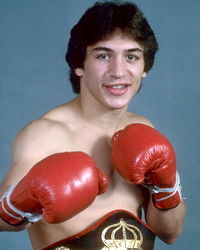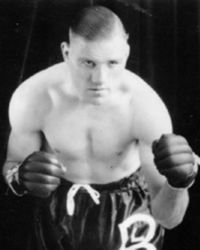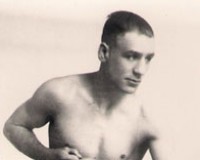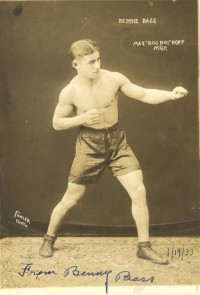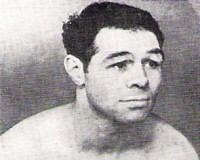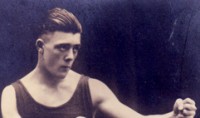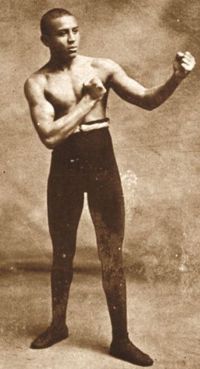Deuk-Koo Kim pugile
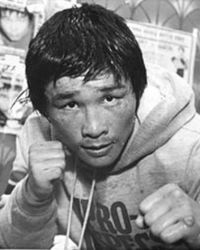
- combattimenti
- 20
- vinto
- 17
- perduto
- 2
- pareggiare
- 1
- Stato
- inactive
- Divisione
- lightweight
- Debutto
- 1978-12-07
- Altezza
- 5′ 6″/168cm
- Arrivare a
- 65″/165cm
- Età
- 23
- Nato
- 1959-01-08
- Morte
- 1982-11-17
- Nazionalità
- South Korea
Kim Duk-kooa (born Lee Deokgub; July 29, 1955 – November 18, 1982) was a South Korean boxer who died after fighting in a world championship boxing match against Ray Mancini. His death sparked reforms aimed at better protecting the health of fighters, including reducing the number of rounds in championship bouts from 15 to 12.Kim was born in Gangwon Province, South Korea, 100 miles east of Seoul, the youngest of five children. His father died when he was two and his mother married three more times. Kim grew up poor. He worked odd jobs such as a shoe-shining boy and a tour guide before getting into boxing in 1976.After compiling a 29–4 amateur record, he turned professional in 1978. In February 1982, he won the Orient and Pacific Boxing Federation lightweight title and became the World Boxing Association's number 1 contender. Kim carried a 17–1–1 professional record into the Mancini fight and had won 8 bouts by KO before flying to Las Vegas as the world's (WBA) number 1 challenger to world lightweight champion Mancini. However, he had fought outside of South Korea only once before, in the Philippines. It was his first time ever fighting in North America.Kim was lightly regarded by the U.S. boxing establishment, but not by Ray Mancini, who believed the fight would be a "war". Kim struggled to lose weight in the days prior to the bout so that he could weigh in under the lightweight's 135-pound limit. Before the fight, Kim was quoted as saying "Either he dies or I die." He wrote the message "live or die" on his Las Vegas hotel lampshade only days before the bout (a mistaken translation led to "kill or be killed" being reported in the media).Mancini and Kim met in an arena outside Caesars Palace on November 13, 1982 (the night after Aaron Pryor defeated Alexis Arguello). They went toe to toe for a good portion of the bout, to the point that Mancini briefly considered quitting. Kim tore open Mancini's left ear and puffed up his left eye, and Mancini's left hand swelled to twice its normal size. After the fight Mancini's left eye would be completely closed. However, by the latter rounds, Mancini began to dominate, landing many more punches than Kim. In the 11th he buckled Kim's knees. In the beginning of the 13th round Mancini charged Kim with a flurry of 39 punches but had little effect. Sugar Ray Leonard (working as one of the commentators of the fight) said Kim came right back very strong. Leonard later declared the round to be closely contested. When the fighters came out for the 14th round, Mancini charged forward and hit Kim with a right. Kim reeled back, Mancini missed with a left, and then Mancini hit Kim with another hard right hand. Kim went flying into the ropes, his head hitting the canvas. Kim managed to rise unsteadily to his feet, but referee Richard Green stopped the fight and Mancini was declared the winner by TKO nineteen seconds into the 14th round. Ralph Wiley of Sports Illustrated, covering the fight, would later recall Kim pulling himself up the ropes as he was dying as "one of the greatest physical feats I had ever witnessed".Minutes after the fight was over, Kim collapsed into a coma and was removed from the Caesars Palace arena on a stretcher and taken to the Desert Springs Hospital. At the hospital, he was found to have a subdural hematoma consisting of 100 cubic centimeters of blood in his skull. Emergency brain surgery was performed at the hospital to try to save him, but Kim died five days after the bout, on November 18. The neurosurgeon said it was caused by one punch. The week after, Sports Illustrated published a photo of the fight on its cover, under the heading Tragedy in the Ring. The profile of the incident was heightened by the fight having been televised live by CBS in the United States.
| Data | Avversario | Ultimi risultati degli avversari | Luogo | Risultato |
|---|---|---|---|---|
| 1982-11-13 | Ray Mancini | WLWWWW | Caesars Palace, Las Vegas | LOST KO |
| 1982-07-18 | Tadao Ishido | WLWLWL | Munhwa Gymnasium, Seoul | WIN KO |
| 1982-06-27 | Nick Caputol | LDWWLL | Munhwa Gymnasium, Seoul | WIN Unanimous decision |
| 1982-05-30 | Flash Villamer | WWLWWL | Munhwa Gymnasium, Seoul | WIN Unanimous decision |
| 1982-04-04 | Suradej Kiongphajorn | W | Munhwa Gymnasium, Seoul | WIN KO |
| 1982-02-28 | Kwang Min Kim | WLLWWW | Indoor Gymnasium, Cheongju | WIN Unanimous decision |
| 1981-12-27 | Katsuhiro Okubo | LLLWWL | Munhwa Gymnasium, Seoul | WIN KO |
| 1981-09-09 | Flash Romeo | LWWWWL | Jangchung Gymnasium, Seoul | WIN KO |
| 1981-08-16 | Jun Escalera | WLWWLW | Munhwa Gymnasium, Seoul | WIN Points |
| 1981-04-22 | Hong-Kyu Lim | WWWWWW | Changchung Gymnasium, Seoul | WIN Corner retirement |
| 1980-12-06 | Pil Koo Lee | WLWWWW | Munhwa Gymnasium, Seoul | WIN |
| 1980-07-16 | Tony Flores | WWWLDW | Eduardo's Nightclub, Paranaque City | WIN Technical knockout |
| 1980-06-21 | Han Ki Choi | debut | Munhwa Gymnasium, Seoul | WIN KO |
| 1980-01-26 | Jong-Pyo Kim | W | Gudeok Gymnasium, Busan | DRAW Points |
| 1979-10-06 | Young-Dae Kim | debut | Jangchung Gymnasium, Seoul | WIN Points |
| 1979-09-01 | Suk-Soo Jang | debut | Munhwa Gymnasium, Seoul | WIN Points |
| 1979-03-25 | Myung-Soo Park | L | Ulsan | WIN KO |
| 1978-12-09 | Jong-Sil Lee | debut | Munhwa Gymnasium, Seoul | LOST Points |
| 1978-12-08 | Yong-Woong Sung | debut | Munhwa Gymnasium, Seoul | WIN Points |
| 1978-12-07 | Myung-Soo Park | debut | Munhwa Gymnasium, Seoul | WIN Points |
